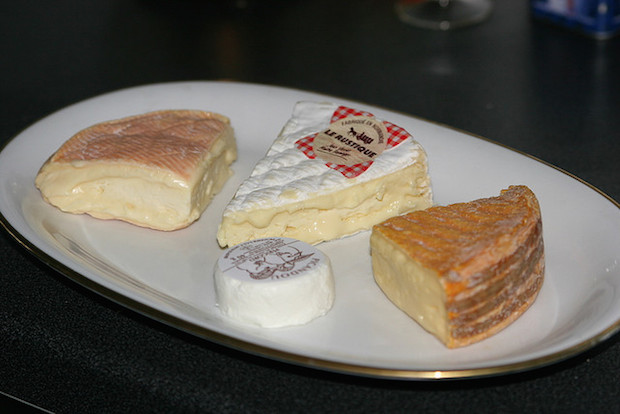Our 3rd Cle France Cheese course, burp!
Our third instalment in this series on French cheese will introduce you to two varieties you may have heard of but never tried. Go back in time on the blog pages and check out the first and second instalments if you’re just joining us.

Image by Sonja Pieper on Flickr
Tomme :
A round, firm cheese, Tomme is made from skim milk and therefore has a lower fat content than other cheeses like Camembert or Brie, mainly from Normandy. The rind is une couleur grise (a gray color). Du lait de vache ou de brebis (cow’s or ewe’s milk) is needed to produce Tomme but there have been instances of goat’s milk producing a delicious Tomme in the Basque country, a region in the western Pyrénées, une chaîne montagneuse qui sépare la France de l’Espagne (a chain of mountains separating France from Spain).
Unlike some cheeses, Tomme is not produced solely in one region. There exist a variety of Tommes, each with their own flavour and method of production. The most famous Tomme comes from the Savoie region in the Alps and is aptly named Tomme de Savoie. There is Tomme de Lozère, Tomme Corse, Tomme de Belloc and many more.
Tomme is a rather versatile cheese that can be paired with either red or white wines. It can also be eaten alongside fruit or charcuterie (jambon, saucisses, pâté, etc—ham, sausages, pâté, etc.).
Munster :
Munster originated in the Vosges, a mountainous region in the northeastern part of France near Germany. It was created by des moines Bénédictins (Benedictine monks) in the 12th century as a way to supplement their diet since they were not allowed to eat de la viande (meat). It has remained a specialty of the Vosges since then and has become one of the more popular French cheeses around the world. However, Munster is not to be confused with the American cheese Muenster, so if you are looking to try authentic French Munster, make sure you pay attention to the spelling on the label.
Munster is made from unpasteurised cow’s milk and must be turned and hand-washed every two days to give the cheese its characteristic strong flavour. The rind has a light orange colour and remains moist because of the frequent washing. If you’ve never tried Munster, you might think something is wrong with le fromage mouillé que vous venez d’acheter (the wet cheese you just purchased), but this is normal.
In the Alsace Lorraine region, Munster is typically eaten avec des pommes de terre et des onions (with potatoes and onions) in traditional German fashion. Because of its Franco-German heritage, a hearty German beer or a French wine from Alsace such as Gewürztraminer provide a wonderful pairing when savouring a good Munster.
Blog submitted by: Alex at The French Property Network - Cle France.